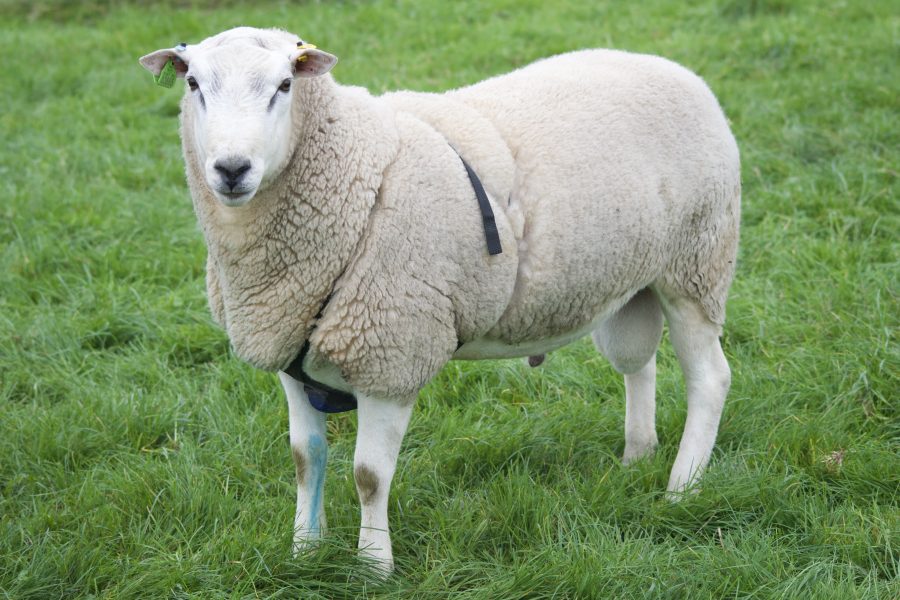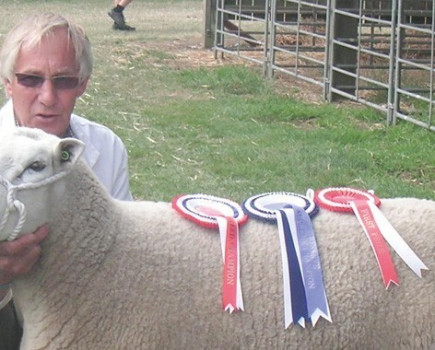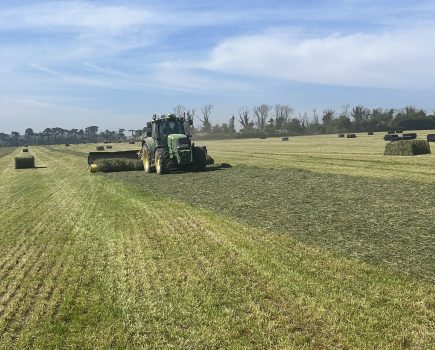As always, as the end of the year approaches there is a tendency for reflection. This has been a mixed year; the lamb trade has been good, but beyond that it had little to commend it, so it is best to put it behind us and look forward to 2025 with a hope of better things. Personally, I am looking forward to the coming year with quiet positivity (said with fingers crossed).
Our Lleyn ewes went to the tup in just the right condition and tupping went better than anticipated; I would ordinarily graze a few ram lambs next to the ewes for a couple of weeks before the tups go in (as effective as a teaser ram), but this year they were grazing away and didn’t come home until just before the tups joined them, something which I thought might slow tupping a bit. Fortunately, this wasn’t the case. Although things slipped by a couple of days, it had no major impact; the first few days were a bit slow but by the first crayon change after seven days, 60% had been covered and the remainder marked within the first cycle.
Not quite as tight as last year (11 days), but 15 days will do and no returns to service, so we are hoping for another nice tight lambing.
Years of selection for fertility and early breeders really has paid dividends; lambing can become a bit wearisome if it drags on for too long, particularly lambing outdoors, so a nice, tight lambing has major benefits, both during lambing and for subsequent management. Now, with a decent bite of grass in front of them, it is simply a matter of leaving them alone for two or three weeks with minimal upset and stress until pregnancies are secured after implantation.
The Herdwick were, however, quite the contrary. Normally a bit slow to get going, they were teased for the first time this year in the rather futile expectation that it might speed things up a little, hopefully bringing them in line with the Lleyn to lamb in mid-March. That was the theory, at least, but the ewes didn’t seem to get the message. The rams went in on the same day, the Herdwick was keen enough to get going, but the ewes were not quite so cooperative and, in spite of teasing this year, the first couple didn’t take the tup until almost two weeks in, which means they are due to commence lambing on about the same date, within a day or two, as they did last year and every year since we have had them.
I did hold out a rather vain hope of having lambing completed before the start of April, but the Herdys have sadly thwarted that ambition; I should have expected it, they are very much creatures of habit and, in spite of my best efforts, will do what they do as and when they want to do it. Even the order of taking the tup is very much in line with previous years; certainly, the last to go has been the last to lamb since she was a teg, even lambing on exactly the same date for the past two years; although she does produce some good twins each time.
As they say, the only predictable thing about sheep is their unpredictability, something that the Herdwick have in buckets full; I wasn’t concerned when the boss decided that she wanted her own sheep, but I was less convinced when she purchased herself a small flock of Herdwick, although I have found them fascinating. They really are a good object lesson in sheep behaviour, although the Lleyn are also capable of providing a few lessons.
With a much reduced, but self-replacing flock, we need to change tups every two years, so this year we have been joined by a new Welsh-bred boy; as with any ram purchase you never know quite what you are getting. He is smart and correct, but also stood out as a very quiet ram at the sale, something that fortunately has continued to be the case. He is probably the most inquisitive ram we have had; he likes to see what is going on, as a consequence of which it has been relatively easy to train him to come for a few sheep rolls, something that proved particularly useful for ease of handling during tupping. He was quite happy standing in the paddock, eating a few rolls, while I changed his crayon without needing to remove his harness; a compliant ram makes life so much easier and less stressful for all concerned. He has also proved to be a very keen worker, at times rather too keen when he has gone looking for work.
We had a few cull ewes in a paddock, one remove from the tupping group, but not far enough for the boy, as we discovered one morning. Not only had he been in and marked one, but he had taken himself back to his paddock with the rest of his girls. The culls were moved a further paddock away, problem solved, we thought; the next morning, however, he stood in the corner of his paddock, head up, full Flehmen lip, scenting the air; having caught the scent of a Herdy ewe two paddocks away. No problem, I thought, too far away for him.
Five minutes later he was strolling across the paddock next to the Herdys. I wasn’t the only one to have spotted him; the Herdwick ram was ready, waiting for him by the fence. Rather than intervene immediately, I simply watched as they cautiously, but quietly, assessed each other from opposing sides of the fence; after a few minutes, with no physical contact even attempted, the Lleyn ram simply turned around, strolled back across the paddock and hopped back in with his girls. He hasn’t been wandering since; a scenario that shows a significant degree of reasoning and a definite sense of discretion being the wisest option – and they say that sheep are stupid.








